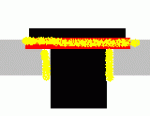I am starting to set my new tank up. I have two holes drilled on the bottom on one end. My question is should I be using bulkheads that are threaded on the inside, where the connection will go to my standpipe and overflow lines into the basement. Or should I use non threaded bulkheads, where I would cement all the pvc plumping to the bulkhead, inside the tank and under the tank?
Any suggestions?
Thanks..Reefstar
Any suggestions?
Thanks..Reefstar






